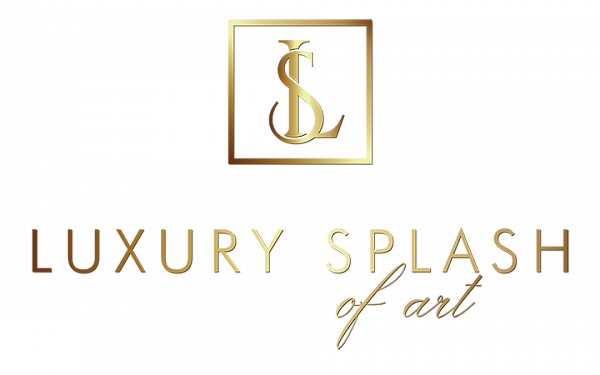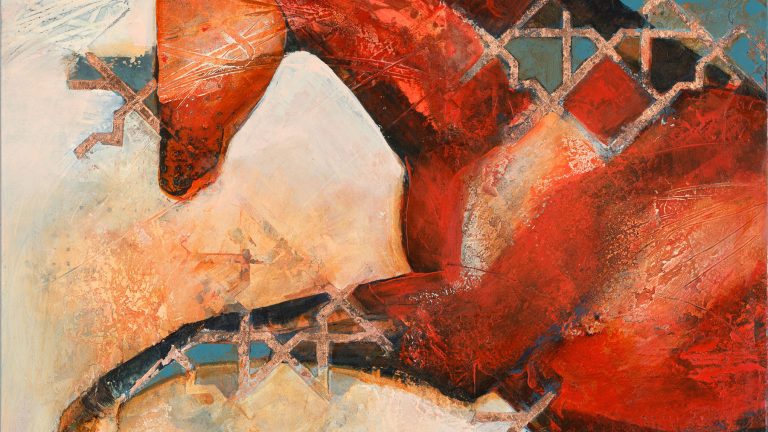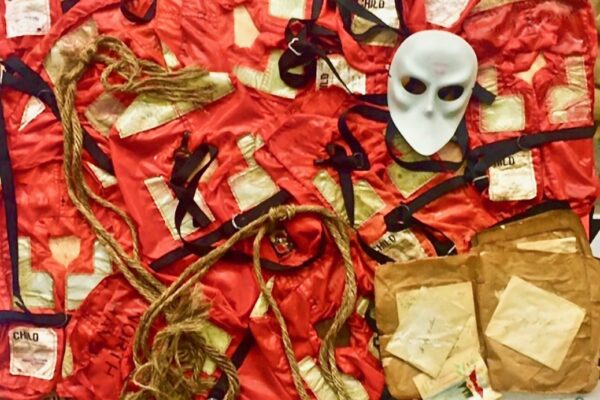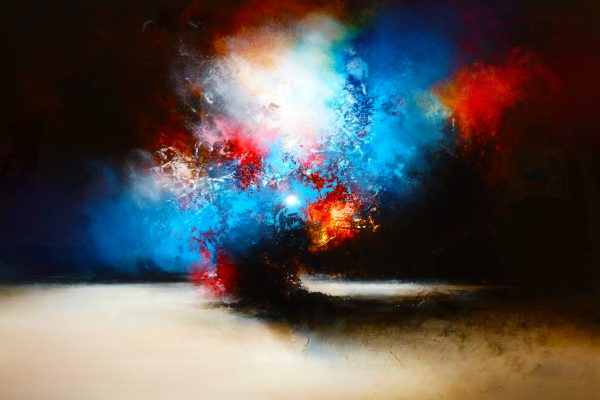Ancient cave paintings are considered to be one of the oldest human artistic creations. And the horse has always played an important part in it. Horses have a lot more images than other species (approximately a fifth of all illustrations). And there’s a reason: the horse has been a devoted companion of man for many generations, accompanying him in the household and daily life, on the battlefield, and in sporting events. Additionally, the image of the horse had a significant role in both European and Oriental culture, serving as a representation of wealth, power, strength, and independence, while the person riding the horse was seen as the ideal of a powerful and robust individual. It is astounding how skillfully the cavemen depicted motion and speed with a few basic markings daubed on a cave wall using just fingertips, sticks, and homemade paints.
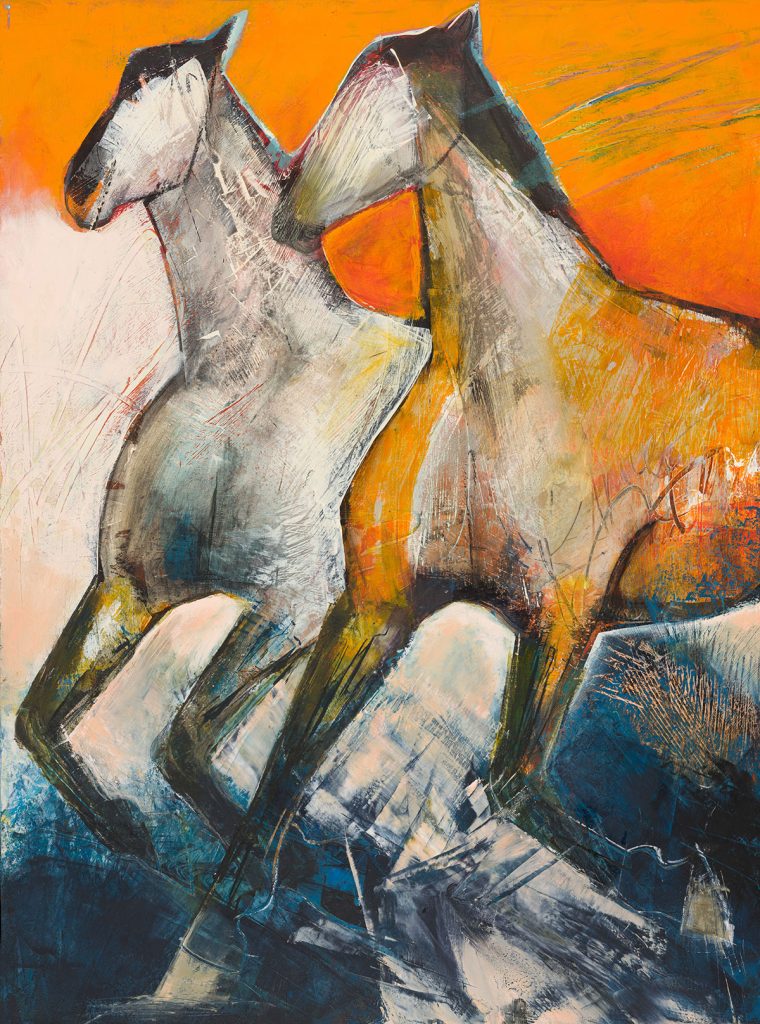
Numerous paintings and engravings found in caves were made using only 4 colors because they were easily accessible as natural pigments: red ochre (haematite, or baked limonite), yellow ochre (limonite), black (often from charcoal, soot) and white (kaolin clay, burnt shells, calcite). These pictures, having both symbolic and religious functions, served as a sort of storytelling, preserving important events. Centuries have passed, but ancient rock art still inspires creators from all over the world. It is with great pleasure that Katerina Morgan Horse Polo Art Gallery (https://katerinamorgan.art/) presents to you the works of two outstanding contemporary painters who were influenced by ancient art. Horse Polo Art Gallery is a unique art space inspired and dedicated to horses, riders, and various equestrian disciplines. The gallery’s goal is to connect brilliant equestrian artists from all over the world with collectors and horse enthusiasts.
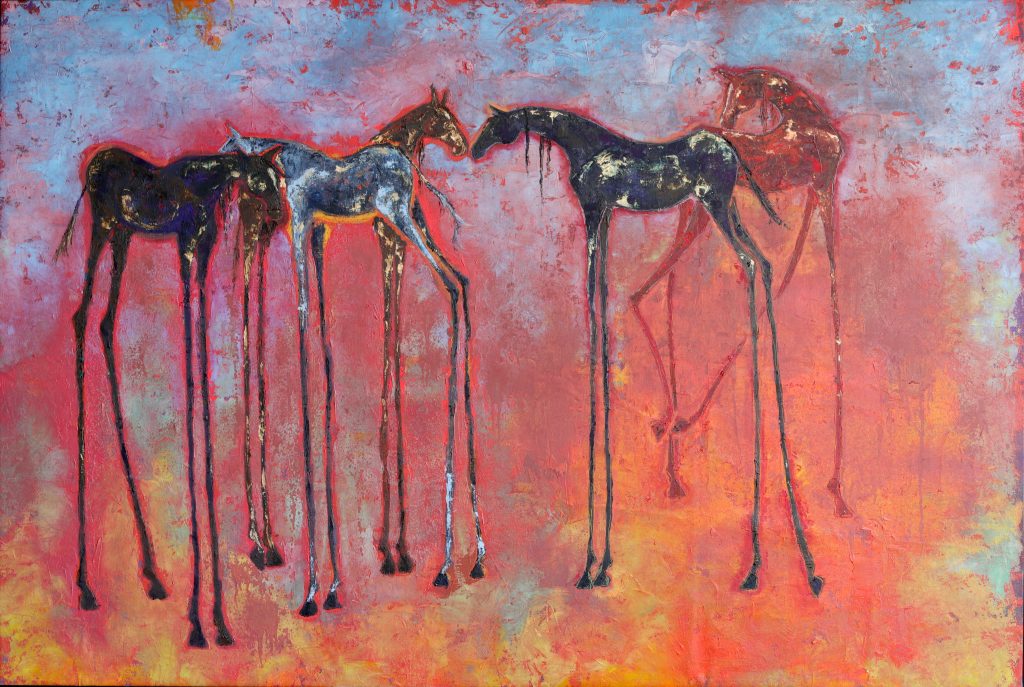
Jane Johansson UK Jane Johansson’s studio is located at The Cowshed in Lewes, East Sussex, where she lives with her family and horses. Previously she had a successful career in fashion and costume design for Contemporary Dance and Ballet after graduating with a BA (Hons) in Fashion Design at Central St. Martins. Jane paints for the love of horses, to explore the emotional connection that exists between a human and a horse, and to share the essence of horse energy through the power of the painting. Together with her horse Spirit, she crosses the untamed landscape, passing rivers and valleys and ascending to the top of a mountain where they relax and take in the grandeur of the area spanning out in front. It’s a magical experience and it’s these adventures in the saddle that inspire Jane to paint. The creative process starts with abstract play, often making textural marks on a plaster base which creates the foundation for future layers of transparent paint and holds the physical marks and impressions from the artist’s hand. At this stage Jane will create the intention for the piece, often choosing at random 3 words from her “box of emotions” which go on to inform the mark-making and colour palette. From this abstract mess, the horse will start to emerge and make his presence known on the panel. Jane’s paintings capture the spirit and soul of the horse and the joy and sense of freedom that they give her.
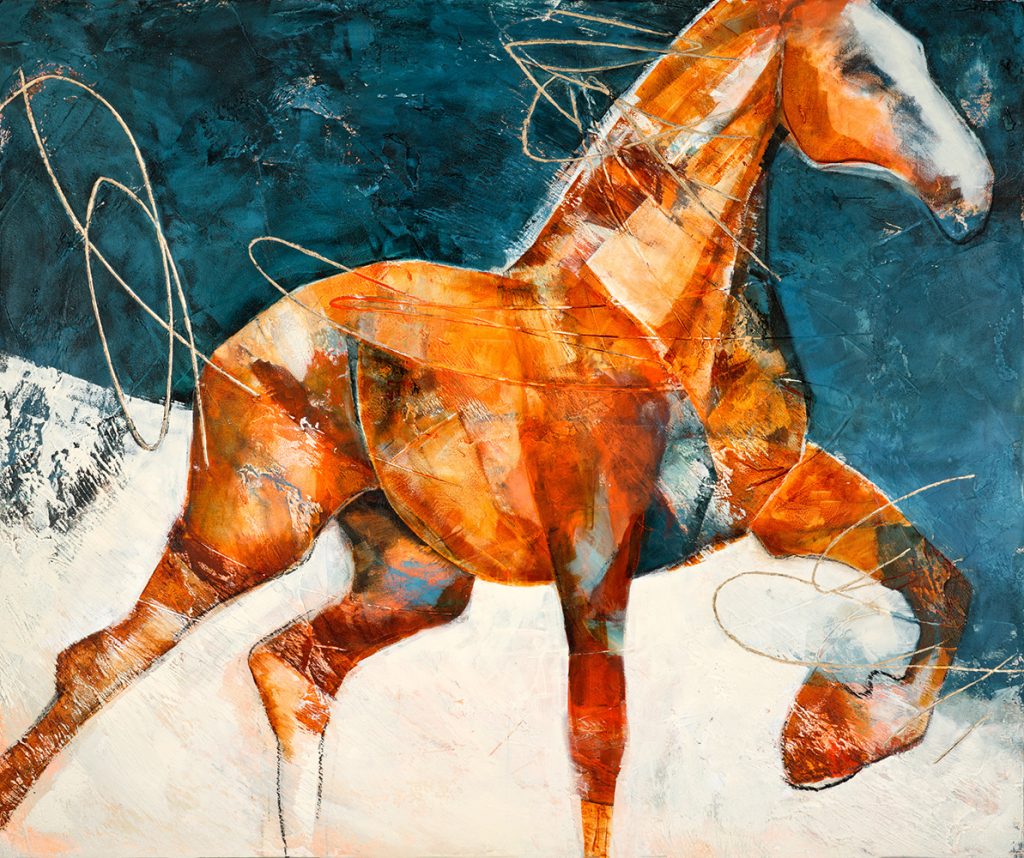

Cara Van Leuven USA Cara painted her first piece, a 6′ x 6′ image of two horses cuddling, in 2011, although she has always had an affection for this graceful animal. At the age of nine, she started taking riding lessons and realized she wanted to jump after seeing characters like Touch of Class, Big Ben, and Abdullah. But when Cara moved away from her native Ft. Wayne, Indiana, to attend Western Kentucky University to study photography, her life with horses appeared to have come to an end. Although she was very skilled with a camera and regularly won internships working as a photographer for newspapers around the nation, the absence of horses was noticeable. The 2008 recession eventually helped her change her lifestyle with a shift to St. Louis, Missouri. The only work she could find was as a carriage driver which reunited her with horses and reignited the passion that had been dormant for far too long. You will surely distinguish the horses painted by Cara because they have exceptionally long legs. They symbolize how a horse itself and life as a whole are fragile. Cara’s work is incredibly autobiographical, and she was inadvertently telling the story of herself losing touch helping her mare, suffering from a bone deformity. The use of colors is very natural, as Cara never studied color theory and she just follows her intuition.
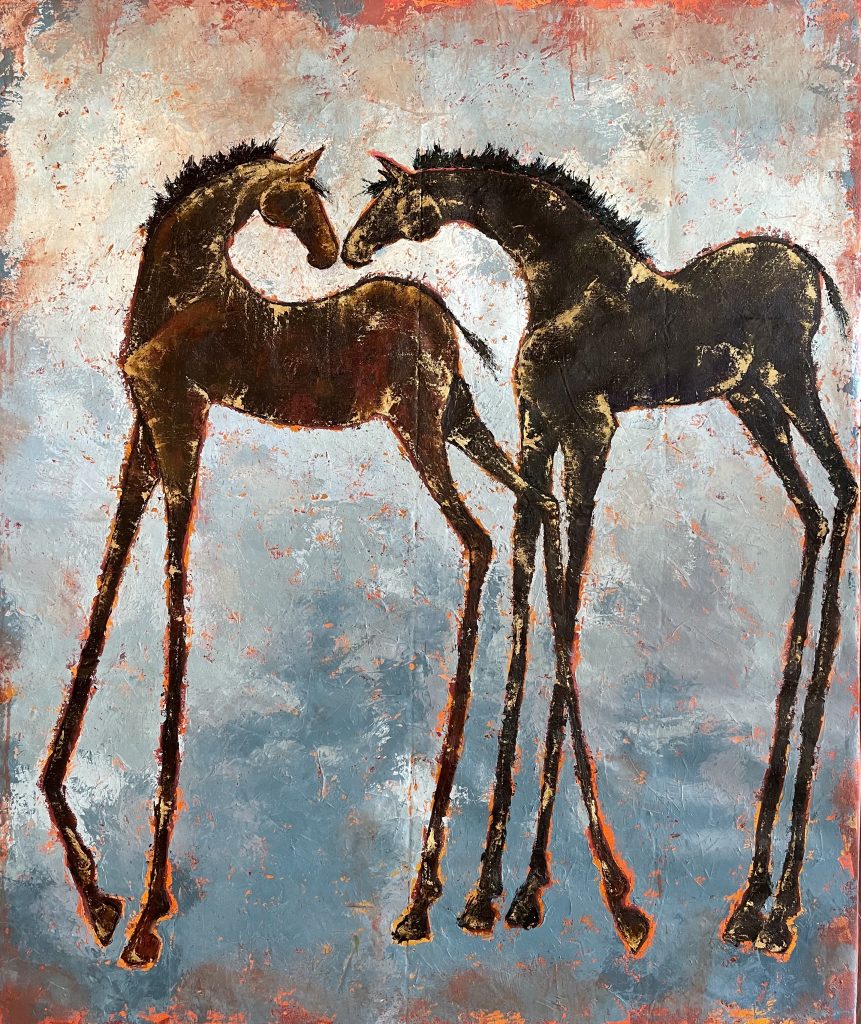
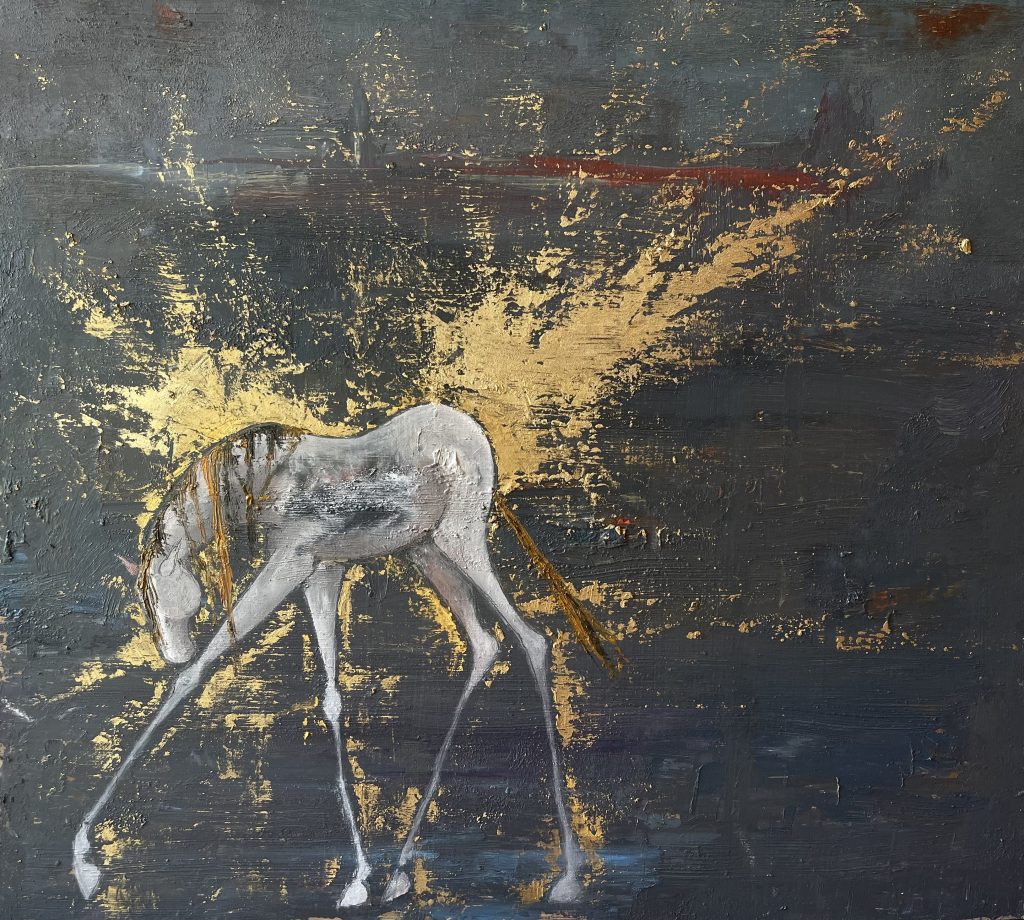
You can find more about the artists and their creations on the Katerina Morgan Horse Polo Art Gallery website: www.katerinamorgan.art
